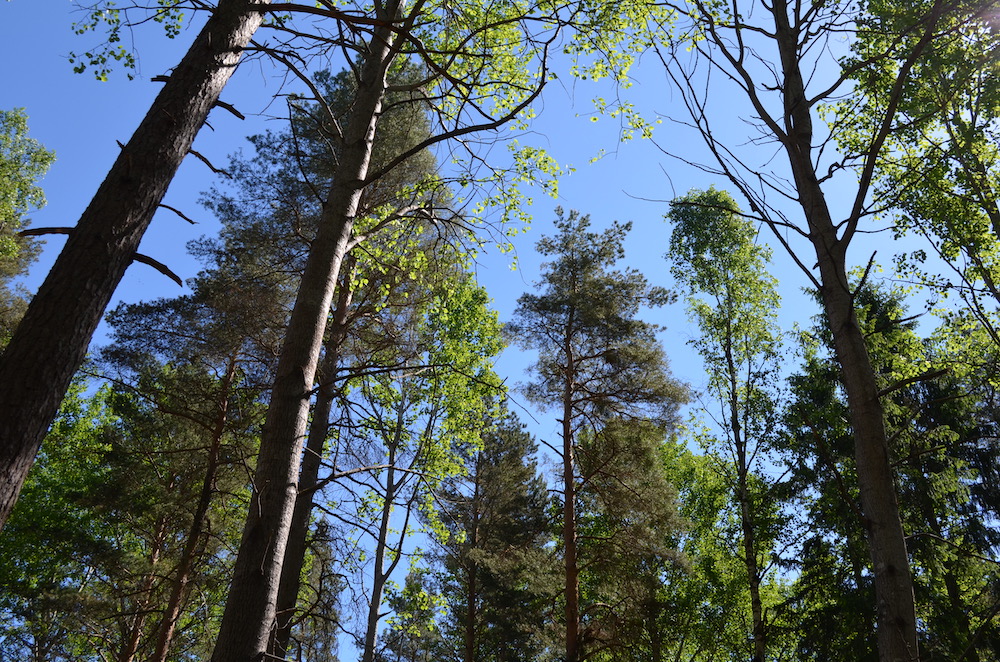
Forest residues bioenergy has ‘significant positive impact’ on climate: report
December 21, 2022
By Bioenergy Europe
The preliminary results of a recent study show that the utilization of forest residues for bioenergy will have a positive climate effect until 2050.
 Photo: Annex Business Media
Photo: Annex Business Media The preliminary results of a recent study show that the utilization of forest residues for bioenergy will have a positive climate effect until 2050. The report takes into account the fact that these residues would otherwise be left in the forests and would decay. Taking into consideration decay shows that bioenergy from forest residues is not only carbon neutral but has a substantial positive effect in terms of climate protection.
Forest residues include all harvesting residues and natural losses due to mortality, insects, and storms, excluding residues in the soil (roots and stumps) or in litter. This low-quality wood, containing both coarse and fine woody debris, is not suitable for other uses in the wood industry. By using these forest residues availably for forest wood chips in Europe for bioenergy, approximately 5.6 billion tons of CO2eq can be avoided cumulatively from 2020 to 2050 while safeguarding biodiversity and forest health. This amount of savings from using residues is comparable to eight times the emissions of road transport in the EU27 in 2020. This calculation is based on the use of forest residue wood chips in Europe, which will save 2.8 billion tonnes of CO2eq by 2050, with an amount of residues equal to 10 per cent of the growing stock left in the forest to safeguard biodiversity. If all residues will be left in the forests, it would result in emissions of over 2.8 billion tons of CO2eq.
The utilization of forest residues offers a win-win-win scenario because it delivers a positive contribution to the energy transition, climate protection and biodiversity. Therefore, it should be classified as eligible for state funding in Europe.
The results of the study further highlight the synergies with negative emissions technologies like bioenergy with carbon capture and storage (BECCS) or biochar, as well as with hydrogen. Such additional benefits open the door for future smart climate and energy friendly projects in the medium term.
The author of the study, Professor Hubert Röder, comments that “There is still big potential in using primary woody biomass for energy. It is mainly a by-product of smart and sustainable forest management that aimed to produce high-quality timber. If the residues are not used they will rot in the forest – without replacing fossil fuels and creating income from sustainable forest management practices. In other words, this is a lose-lose-lose situation for the energy transition, the transition to climate resilient forests and climate change mitigation.”
Bioenergy Europe’s president Christoph Pfemeter highlights that “We are in both an energy and a climate crisis at the same time that millions of tonnes of forest residues decay in our forests and function as breeding material for bark beetles and as tinder for forest fires. Forest residues could instead replace fossil fuels! The longer the phase-out of fossil fuels is held back, the lower the chances for becoming climate-neutral by 2050. The use of forest residues is an integral part of sustainable forest management – helping to maintain the high level of stored carbon in our forests and acting as the main renewable energy source of Europe.”
The assessment is conducted cradle-to-grave, including all aspects of alternative storage and decay in the forest and a dynamically decreasing substitution due to the improving climate impact of the European energy supply.
Deadwood amounting to a minimum 10 per cent of the growing stock is left in the forest and secures biodiversity.
Further results of the study will be published in January 2023.
Print this page